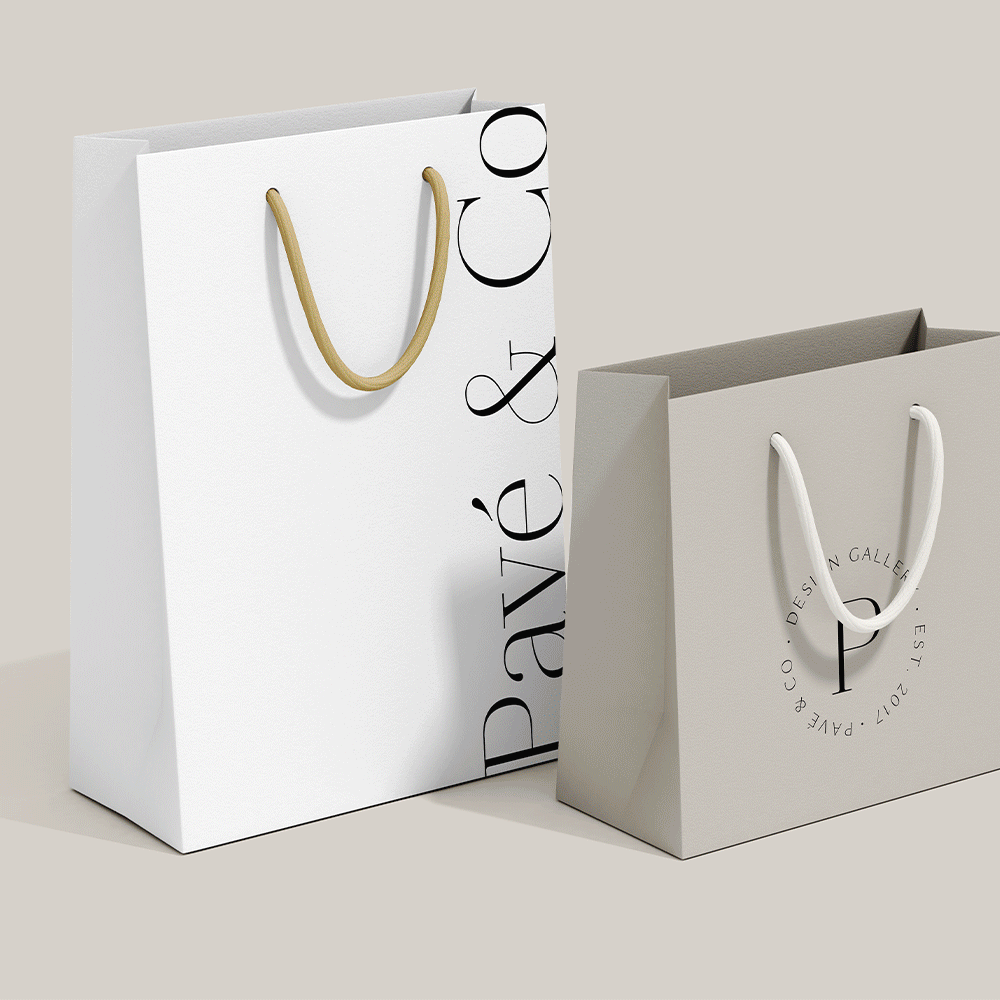We subconsciously associate feelings with color, so be sure your brand is telling the right story and evoking the right emotions by using the psychology of color in your branding.

Color paints a story without having to say a single word.
It brings a story and visual to life, allowing us to feel emotions and a deep level of understanding that almost can’t be explained.
These emotions and feelings are derived from our subconscious. For example:
- Seeing yellow can instantly make you happier and bring joy.
- Enter into a lavender room and you may find you instantly calm down.
- Seeing red can spark intense passion or trigger danger.
While color can vary from person to person based on context, personal experiences, and neurological variances, there is a general consensus of the emotions and feelings colors can evoke.
THIS IS BECAUSE OF THE PSYCHOLOGY OF COLOR.
There are many things to consider when creating the visual identity of your brand–from the logo design to the colors and the fonts used, creating the perfect combination of visual elements to help you clearly tell your brand story can be overwhelming.
But, before jumping into the visual identity of your brand, it’s important to take a step back and define your brand strategy. This is where you lay out the foundation of your brand elements and identify the emotions and keywords used to describe your business. This includes your brand’s core values, mission and vision, as well as your brand’s archetypes, personality, voice, and tone.
Related: What the heck are brand archetypes?
Your brand is the sum of all of your touchpoints, emotions, feelings, and experiences a customer has with your business.
If you’re ready to identify the right palette using the psychology of color, start by asking if your brand is:
- traditionally masculine or feminine?
- playful or serious?
- luxurious or affordable?
- modern or classic?
- youthful or mature?
- loud or subdued?
Your answers will help identify the keywords and emotions I mentioned earlier. To be strategic about the colors used in your branding, let’s dive into what each of the 14 basic colors mean when it comes to the psychology of color.
THE PSYCHOLOGY OF COLOR
BLUE
Blue tones can evoke emotions of calm and zen-like peace. With this color surrounding us everywhere in our daily lives, from the sky to large bodies of water, it is viewed as a non-threatening, conservative color.
Blue is also the most common favorite color among both men and women, however, it is particularly preferred by men. Brands that use blue in their branding are perceived as dependable and trustworthy. Blue’s emotions include:
| POSITIVE | NEGATIVE | BRANDS |
| Tranquility Security Integrity Peace Loyalty Trust Intelligence | Coldness Fear Masculinity | American Express HP Lowes Oreo Vimeo Ford WordPress GE |
TURQUOISE
Turquoise tones can evoke emotions of calm and clarity. Turquoise is a transformational color blending the security of blue and earthiness of green. This color is inspiring and associated with recharging the spirit, replenishing energy levels, and evoking positive thoughts. Brands that use turquoise are centered on communication, education, media, and computer technology. Turquoise’s emotions include:
| POSITIVE | NEGATIVE | BRANDS |
| Spiritual Healing Protection Clarity Inspiration Self-expression | Unreliability Boastfulness Secrecy | Tiffany and Co. Siemens MeetEdgar Simply Sianne |
GREEN
Green tones can evoke emotions of growth and freshness. The color green is easy on the eyes and doesn’t require an adjustment period when we take it in. Green sits in the middle of the color spectrum and is the color of balance. Brands that use green in their branding are perceived as peaceful and foster feelings of health and growth. Green’s emotions include:
| POSITIVE | NEGATIVE | BRANDS |
| Freshness Environment New Money Fertility Healing Earth | Envy Jealousy Guilt | Whole Foods Publix BP Starbucks Tropicana Land Rover |
YELLOW
Yellow tones can evoke emotions of happiness and joy. Yellow is often associated with being cheerful and its hue can instantly brighten up a space and change the mood of a person experiencing it. But too much yellow can evoke emotions of anger, frustration, fear, and anxiety. Brands that use yellow in their branding are perceived as optimistic and warm. Yellow’s emotions include:
| POSITIVE | NEGATIVE | BRANDS |
| Bright Sunny Energetic Warm Happy Perky Joy Intellect | Irresponsible Unstable | Nikon National Geographic Best Buy McDonald’s Shell Ikea |
PURPLE
Purple tones can evoke emotions of royalty and wealth. Sitting between red and blue, purple is a mixture of femininity and masculinity. Not commonly seen in nature, purple is rare, and often viewed as being special or artificial. Because of the rare sightings of purple in nature, this color gets associated with time, space and cosmos. Brands that use purple in their branding are perceived as wise and imaginative. Purple’s emotions include:
| POSITIVE | NEGATIVE | BRANDS |
| Royalty Nobility Spirituality Luxury Ambition Wealth | Mystery Moodiness | Hallmark Cadbury Taco Bell Yahoo |
PINK
Pink tones can evoke femininity and playfulness. Pulling from its neighbors red and purple, the color pink brings in a wide variety of emotions. The bright, striking hue of pink creates a boldness that sparks feelings of self-respect, while also embracing the imagination and creativity of purple. Brands that use pink are perceived as creative and feminine. Pink’s emotions include:
| POSITIVE | NEGATIVE | BRANDS |
| Imaginitative Passion Happy Feminine Sweet Compassion Playful | Impulsiveness Flippancy Immaturity | Barbie Victoria’s Secret Roxy Cosmopolitan |
RED
The color red easily has the biggest impact on the human psyche. While red can evoke emotions of passion and love, it can also very quickly create emotions of danger and fear. Red should be used strategically in your marketing and branding efforts, as the color has been shown to reduce analytical thinking and speed up and intensify our reactions. There’s a reason red is used to identify a sale! Brands that use red in their branding are perceived as bold and energetic. Red’s emotions include:
| POSITIVE | NEGATIVE | BRANDS |
| Love Passion Energy Power Strength Heat Desire | Anger Danger Warning | Target Coca-Cola CNN Virgin Canon Tesla |
ORANGE
Orange tones can evoke emotions of confidence and friendliness. Orange can easily bring about feelings of excitement, enthusiasm, and warmth. Being a fun, energetic hue, orange is a great attention grabber in your brand elements. The color also conveys value. Brands that use orange in their branding are perceived as friendly and cheerful. Orange’s emotions include:
| POSITIVE | NEGATIVE | BRANDS |
| Courage Confidence Friendliness Success Energy Warmth | Ignorance Sluggishness | Home Depot Amazon Nickelodeon Hooters Harley Davidson |
BROWN
Brown tones can evoke emotions of sturdiness and reliability. With an abundance of brown in nature and earth, brown is reliable. With black making up a large percentage of brown’s color, brown offers the same seriousness of black with a slightly warmer, softer tone. Brands that use brown in their branding are perceived as dependable. Brown’s emotions include:
| POSITIVE | NEGATIVE | BRANDS |
| Seriousness Warmth Earth Longevity Conservative Reliability Support | Dull Boring Conservative | UPS Cotton Nespresso Hershey’s |
GOLD
Gold tones can evoke emotions of luxury. In nature, gold is a rarity that you have to work for and is a symbol of success, fortune, and status. While gold is a representation of wealth, it is also associated with knowledge and spirituality. Brands that use gold in their branding are high-end and expensive. Gold’s emotions include:
| POSITIVE | NEGATIVE | BRANDS |
| Wealth Wisdom Prosperity Valuable Traditional | Egotistical Self-righteous | Rolex MGM Grand Versace |
SILVER
Silver tones can evoke emotions of forward-thinking and futuristic design. It is the color of illumination and reflection. Silver also has gentle and comforting qualities, related to the sensitivity of the moon’s cycle of ebb and flow. Brands that use silver in their branding are sleek and modern. Silver’s emotions include:
| POSITIVE | NEGATIVE | BRANDS |
| Glamorous High Tech Graceful Sleek Soothing | Indecisive Dull Non-committal | Tesla Apple Mercedes-Benz Jaguar |
GRAY
Gray can evoke emotions of modernity and intelligence. While gray doesn’t have a dominant psychological characteristic, it can still be powerful in your branding. It can serve as a balance to the other colors being used in your brand or to create negative space. Brands that use gray in their branding are perceived as sophisticated. Gray’s emotions include:
| POSITIVE | NEGATIVE | BRANDS |
| Security Reliability Intelligence Neutral Timeless Balance | Gloomy Sad Conservative | Apple |
WHITE
White can evoke emotions of innocence and purity. As a reflector, white implies cleanliness and sterility. With lack of hues in white’s color wheel, white is a great way to bring a chic, clean, modern design to your brand elements. The use of white space can allow you to enhance your brand design. Brands that use white in their branding are perceived as minimal and fresh. White’s emotions include:
| POSITIVE | NEGATIVE | BRANDS |
| Goodness Innocence Purity Fresh Clean Easy | Isolation Pristine Emptiness | The North Face Mini Cooper |
BLACK
Black can evoke emotions of protection and mystery. Black is the total absorption of color. It is a symbol of power and is essentially the absence of light. Black stands for sophistication and is timeless and effortlessly stylish. Brands that use black in their branding are perceived as authoritative and powerful. Black’s emotions include:
| POSITIVE | NEGATIVE | BRANDS |
| Sophistication Security Power Elegance Authority Substance | Death Evil Mystery | Mont Blanc Bvlgari Chanel Nike |
CONCLUSION
Your brand is a combination of all of the touchpoints and experiences your customer has with your business. Your visual identity defines how the world perceives your brand, and the color is a vital part of that perception.
Picking the color that best evokes the right emotions for your brand’s personality can help you build a strong and strategic brand for your creative business. Now that you understand the psychology of color, you can make an informed decision on the visual identity elements of your brand.







